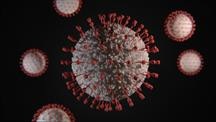Even as the world has returned to normalcy post the COVID-19 pandemic, the virus continues to evolve.
On August 9, the World Health Organization (WHO) upgraded the COVID-19 variant EG.5 to a "variant of interest." This decision indicates that the reputable health organization believes there should be continued monitoring and research into EG.5.
EG.5 is derived from the Omicron family and is a sub-variant of XBB.1.9.2.
The WHO categorizes COVID-19 variants into three levels based on their transmissibility and mutative capabilities: "under monitoring," "of interest," and "of concern." On July 19, the WHO first listed EG.5 as "under monitoring."
However, currently, the global public health risk of EG.5 is considered "low," and its threat appears comparable to other prevalent strains. While the overall risk is deemed minimal, the WHO suggests that based on its genetic characteristics, immune escape potential, and growth rate estimates, EG.5 might spread globally, potentially leading to a surge in cases.
This UN agency highlighted that the prevalence of EG.5 is steadily rising globally, having been detected in 51 countries, including the U.S., UK, and Canada. According to WHO data, by mid-July, EG.5 accounted for 11.6% of weekly cases worldwide, up from 6.2% four weeks prior.
In the U.S., EG.5 is the most dominant strain. Data from the U.S. Centers for Disease Control and Prevention (CDC) show that, in the two weeks leading up to August 5, EG.5 represented an estimated 17.3% of new cases in the country, a rise from just under 12% in the previous two weeks and less than 1% before the end of May. According to Biobot Analytics, a partner of the CDC, the levels of COVID-19 detected in U.S. wastewater in August are comparable to those from March.
The spread of EG.5 coincides with the first increase in hospitalizations this year in the U.S. The last week of July saw over 9,000 people hospitalized due to the virus, up from about 6,300 at the end of June. However, it remains unclear if the rise in hospitalizations can be attributed to EG.5.
In fact, many epidemiologists believe human behavior powers this surge. They point out that record-breaking temperatures drive more people indoors to use air conditioning, aiding the spread of the virus. Summer travel disrupts normal social circles, broadening the virus's reach. Additionally, as some schools reopen, transmissions are likely to increase.
The UK is also experiencing a rise in the EG.5 variant. Last week, the UK's Health Security Agency updated that the EG5.1 variant is estimated to make up 15% of the country's new COVID-19 cases. The agency's Deputy Director, Meera Chand, mentioned they upgraded EG.5 to a "variant of concern" on July 31. However, she noted that the emergence of new variants is "not surprising," and vaccinations remain the best defense against future waves of infections.
Several experts believe that an increase in infections is expected, but there's no evidence suggesting increased virulence. John Edmunds, an infectious diseases specialist at the London School of Hygiene and Tropical Medicine, opined that while new variants might lead to a rise in cases, there's no need for excessive concern, as successive Omicron sub-variants have become the norm over the past 18 months. Immunologist and virologist Dan Barouch from Harvard University anticipates widespread but mild infections. However, high-risk individuals with severe illnesses must remain cautious.
Christina Pagel, a professor at University College London, stated there's no evidence suggesting the new variant might cause more severe diseases. Still, it could result in a surge of cases and subsequent challenges like increased hospitalizations and long-haul COVID. Yet, there's no current reason to believe it will be worse than previous waves.
The WHO, in its latest risk assessment, mentioned that the current evidence does not suggest EG.5 poses any additional public health risk compared to other prevalent Omicron descendants. However, a more comprehensive risk assessment of it is necessary.
To better understand the antibody escape potential and severity of EG.5, the WHO recommends that member countries prioritize actions like monitoring severity indicators.
Since the emergence of COVID-19 at the end of 2019, over 6.9 million people have died globally, with confirmed cases surpassing 768 million. The WHO declared a global pandemic in March 2020 and ended the global emergency state in May this year.
Dr. Tedros Adhanom Ghebreyesus, the Director-General of the WHO, recently stated that it's been three months since the end of the global emergency status for COVID-19. Since then, globally reported case numbers, hospitalizations, and death tolls have been on the decline. This drop is attributed to enhanced population immunity, early diagnosis, and improved clinical care, resulting in substantially lower severe illness and mortality rates than a year ago.
However, Dr. Tedros also expressed concerns about a significant decline in the number of countries reporting data to the WHO. He emphasized that when the decision to end the global emergency status was made three months ago, it was highlighted that the virus still poses a threat.
"Despite these advancements, the WHO continues to assess the risk of COVID-19 to global public health as high. The virus continues to spread across all countries, remains deadly, and keeps evolving," Dr. Tedros stated on August 9.






